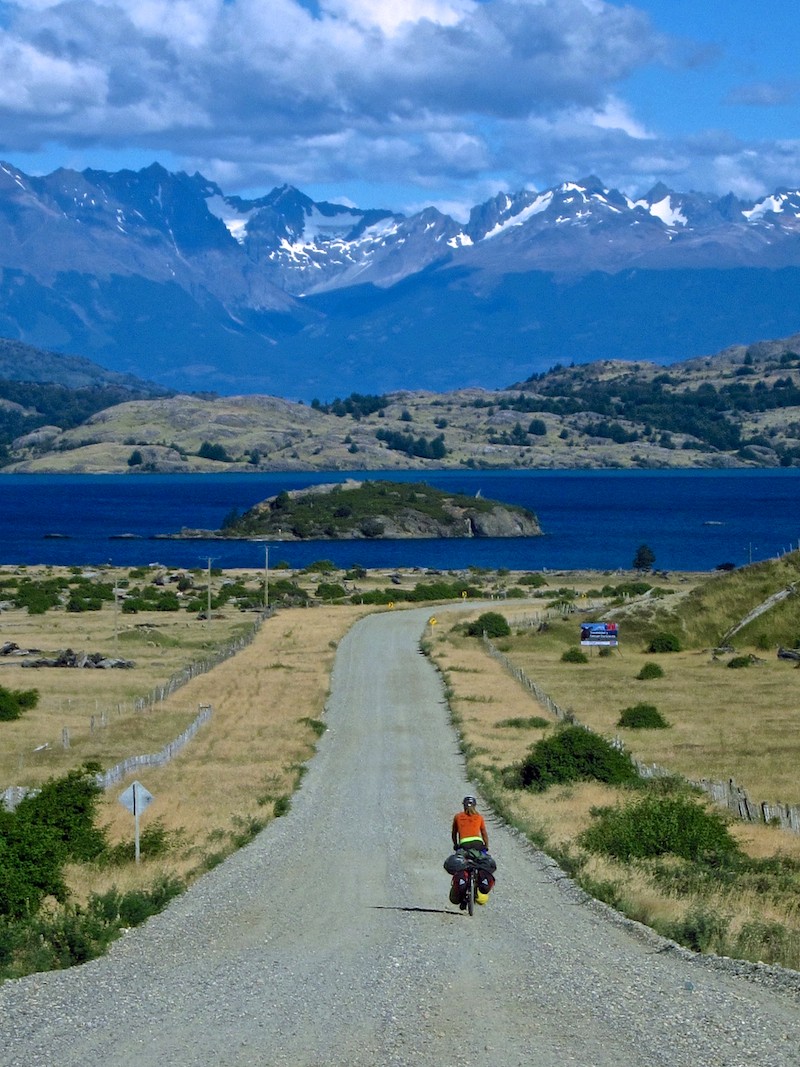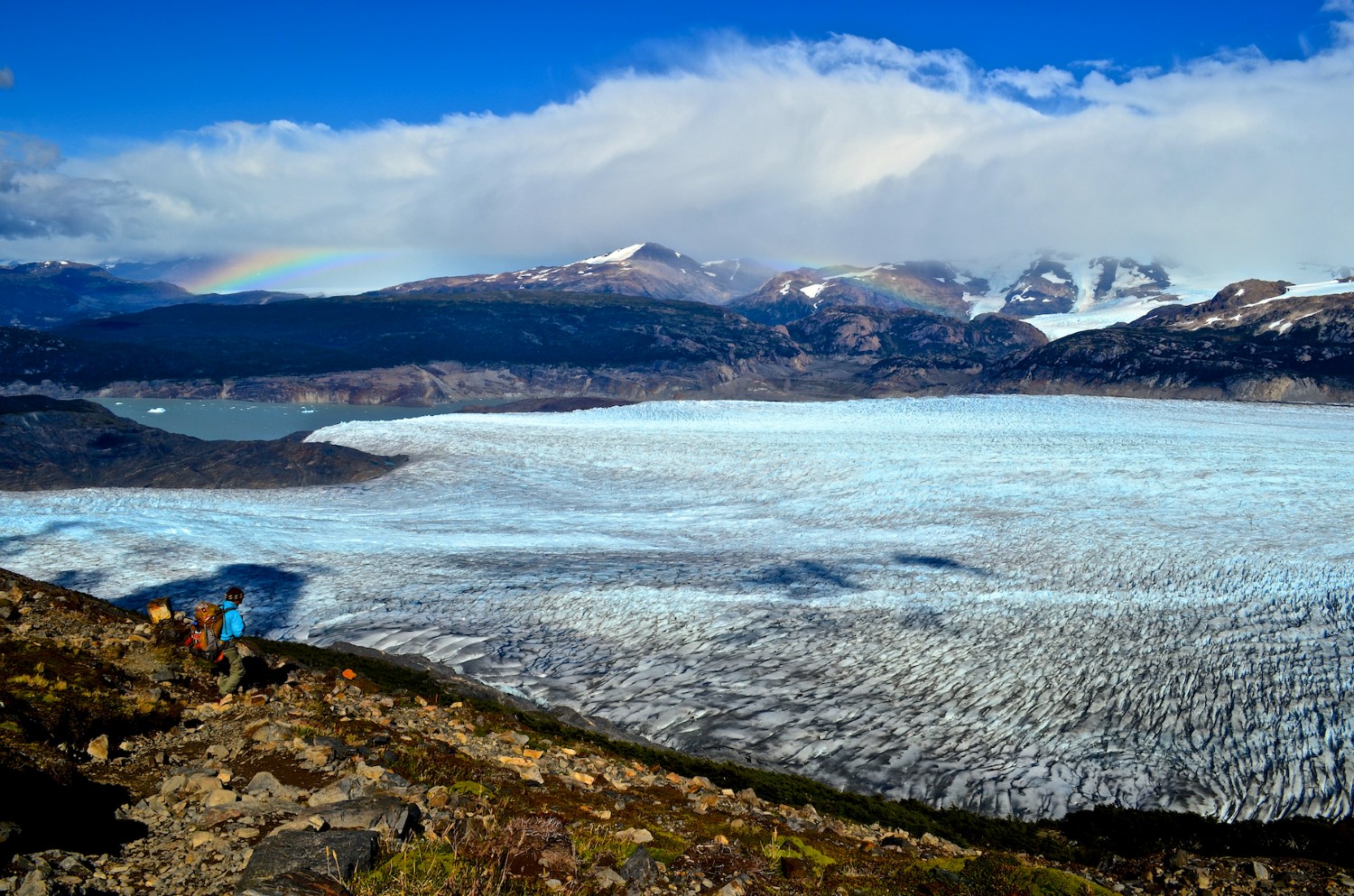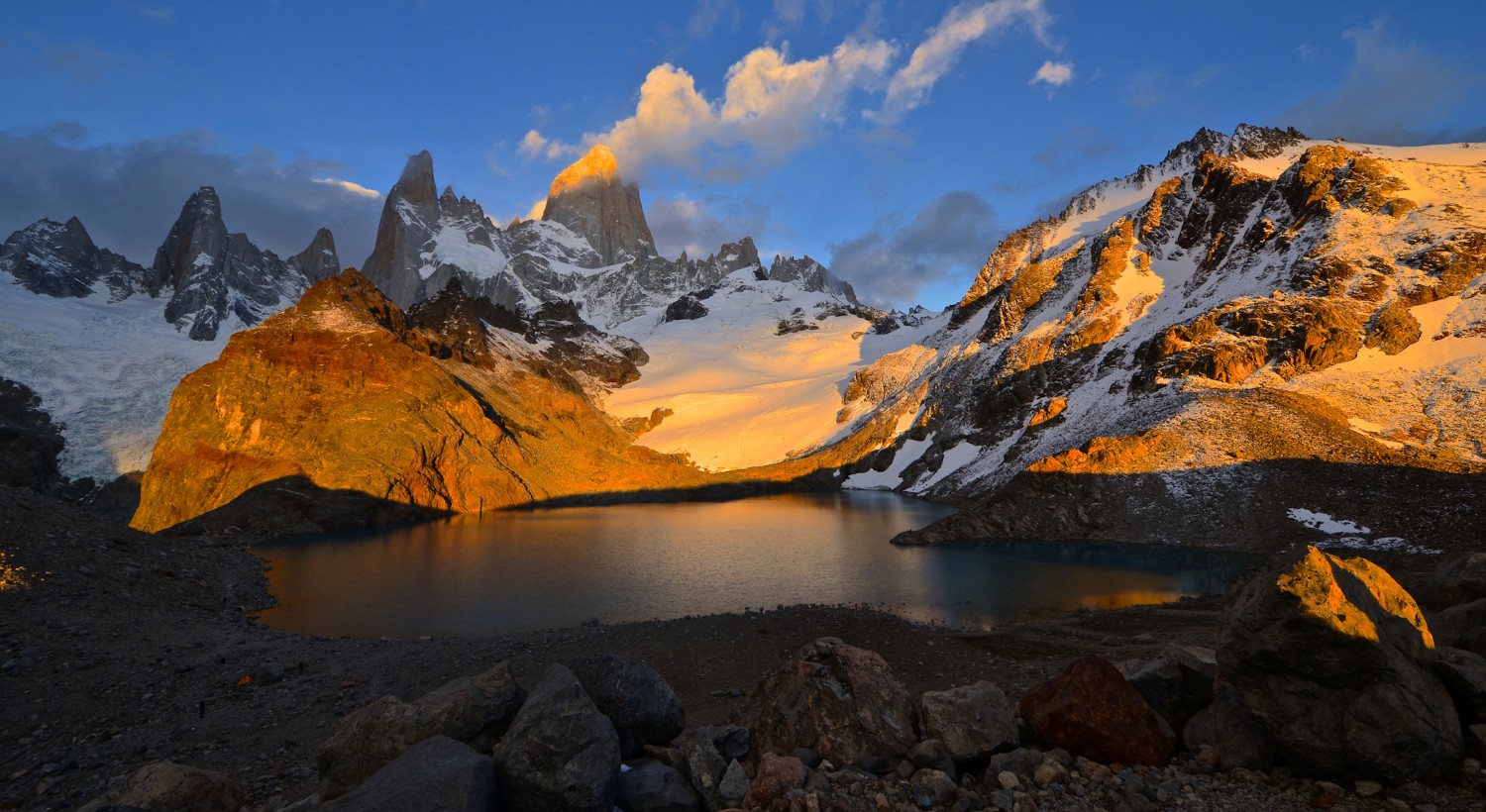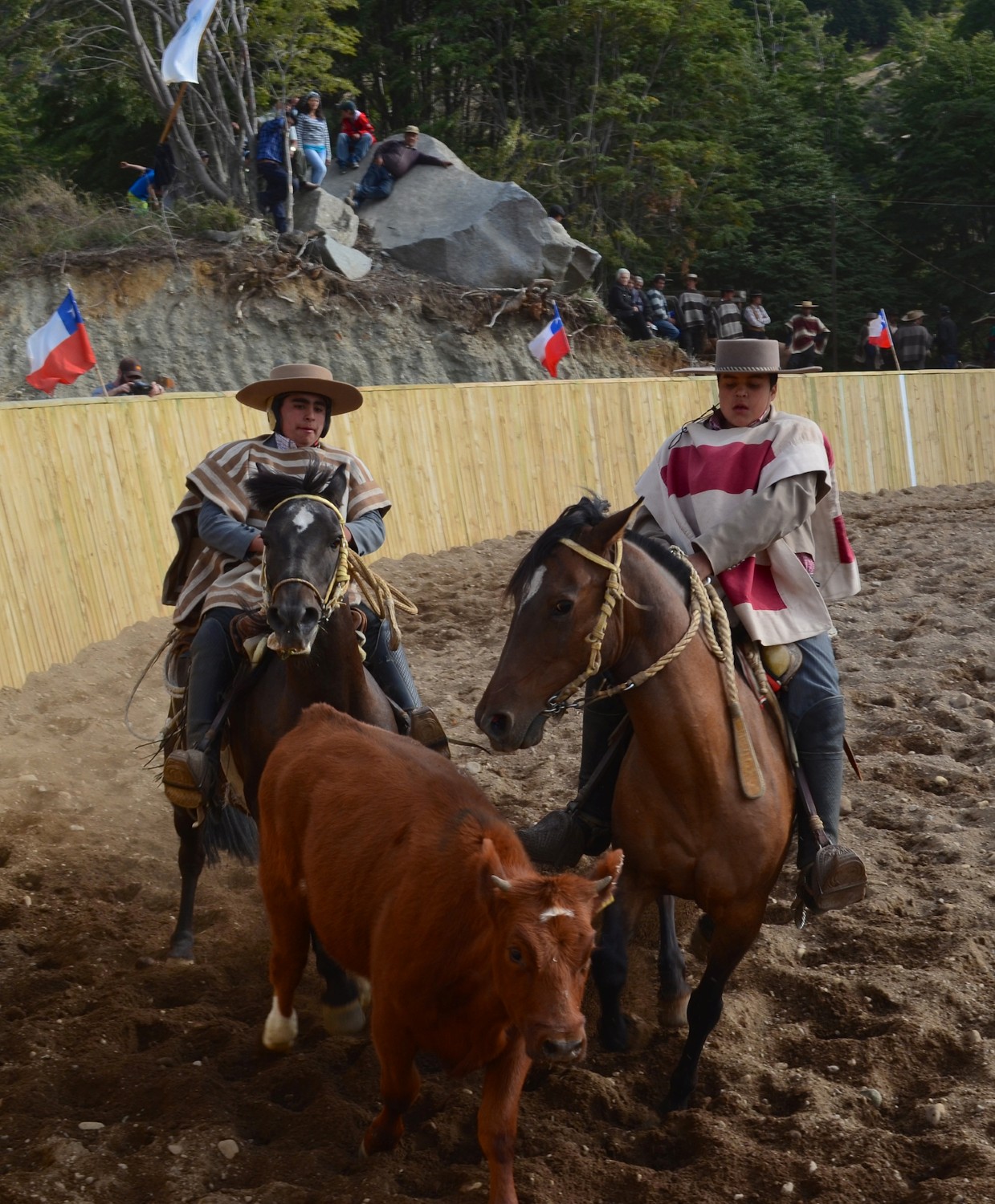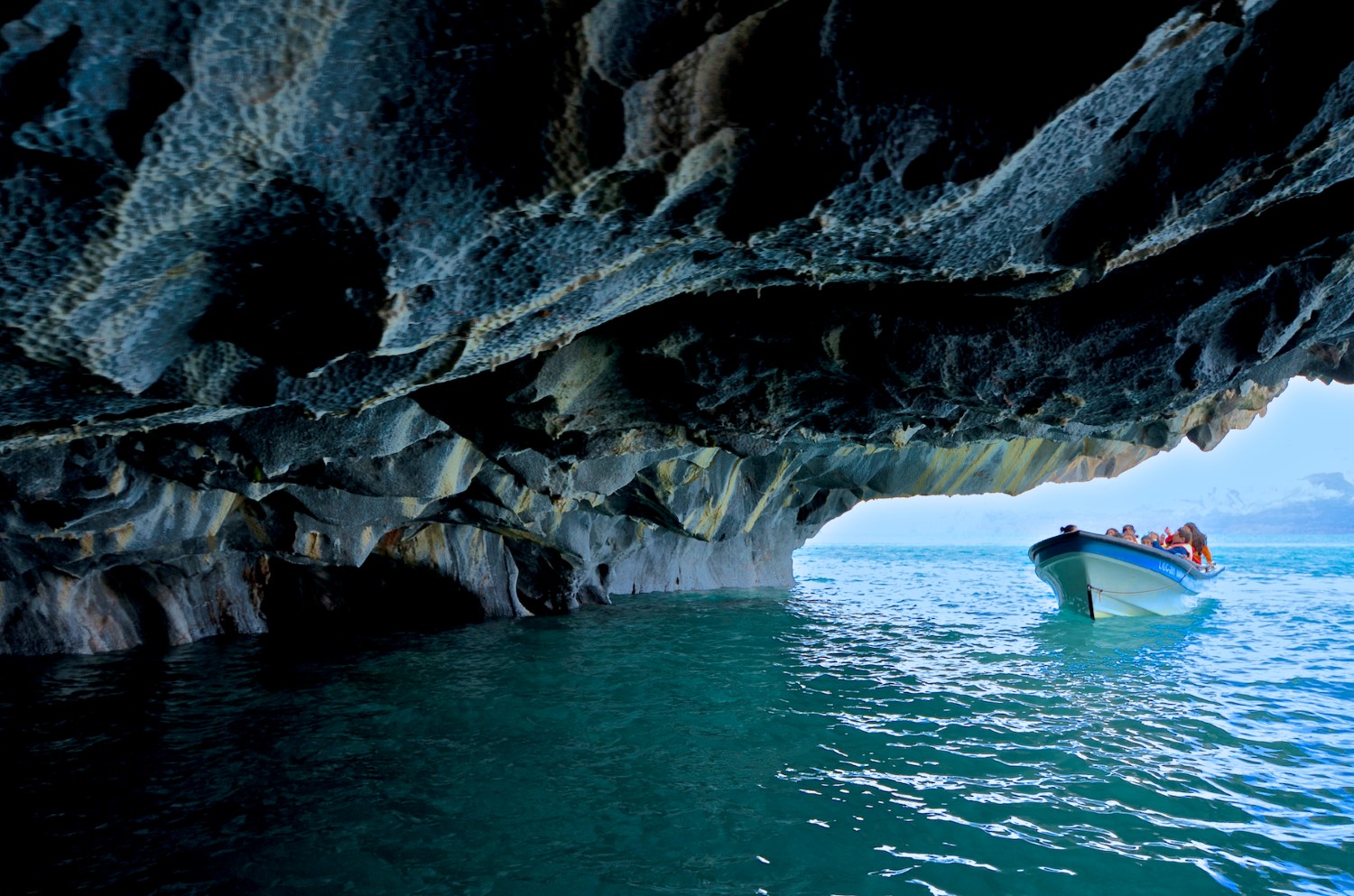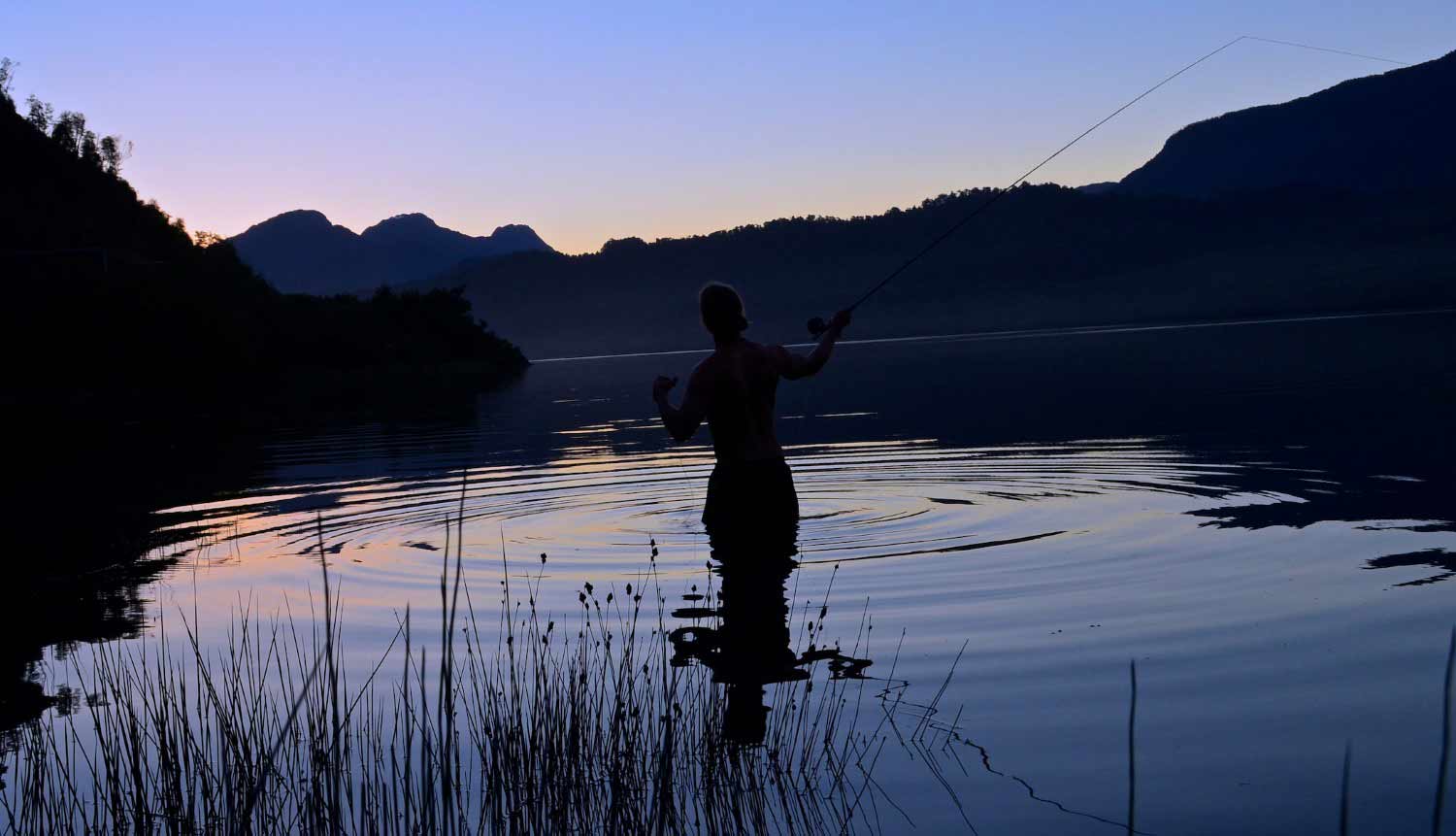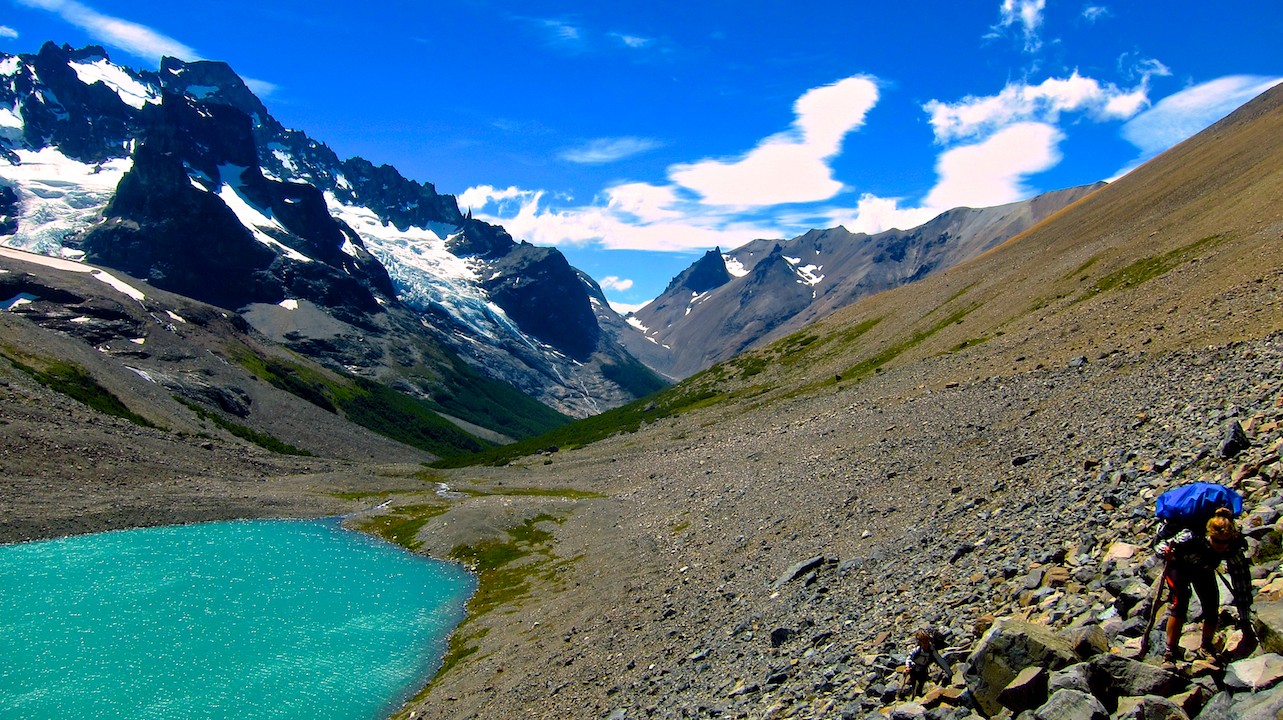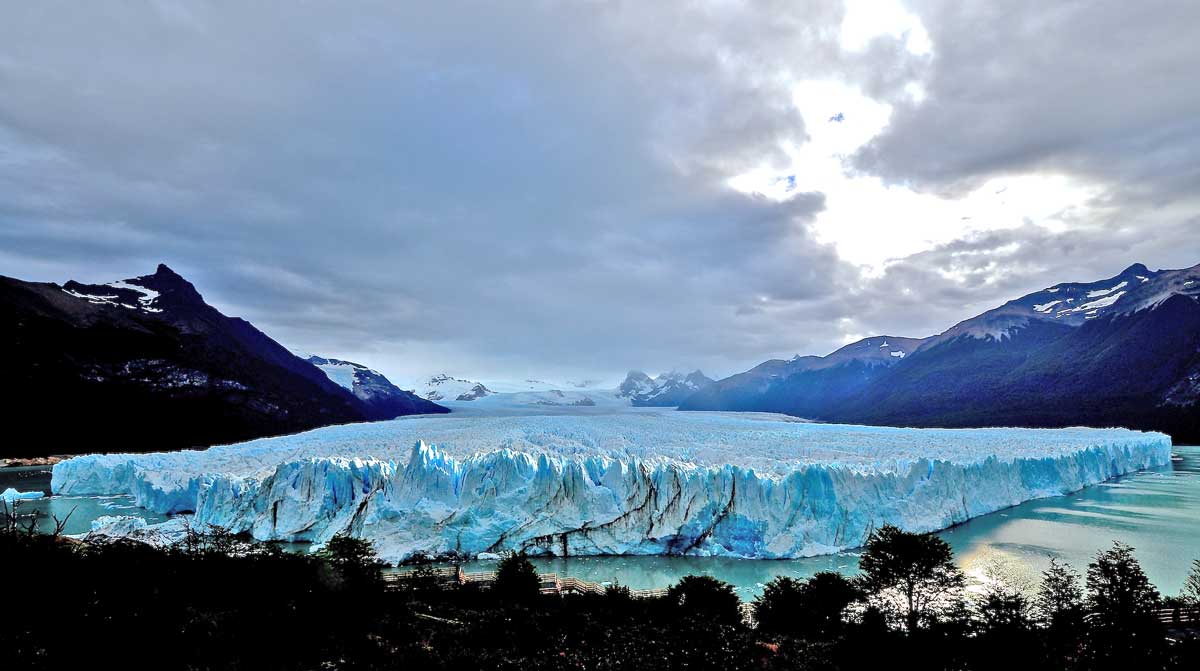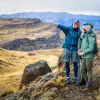Patagonia, the geographical region of the Southern Andes shared by Argentina and Chile, is often referred to as one of the last great frontiers. It's a remote, spectacular landscape of craggy, jagged peaks that protrude skyward out of windswept pampas--immense, barren, arid plains. Astonishingly massive glaciers stretch for hundreds and hundreds of miles as they slowly, imperceptibly carve vast, rocky valleys and deep, frigid lakes of turquoise. Pristine, gin-clear rivers carry water that once--perhaps only hours ago--belonged to glaciers precariously perched on high peaks. From its humble, placid beginnings at Rio Negro, Argentina in the north, to its extreme southern terminus in Tierra del Fuego, Patagonia is a wondrous landscape rivaled by few other places on the planet. And for the active, adventurous traveler the options for exploring are endless. In January 2013, two friends and I embarked on a three-month, 3,000-kilometer, self-supported bicycle tour of Patagonia, taking our time to enjoy the many amazing splendors that we had so longingly read about for so many years. If you have a desire to someday travel in this truly amazing corner of the globe, or perhaps you're looking for a few things to do once your Backroads Patagonia trip ends, then hopefully you'll find the following information helpful, as I share with you some of my favorite active endeavors in Patagonia.
1. Cycle the Carretera Austral, Chile
The wilderness of Patagonia is penetrated by few roads that serve as access to some of the most remote communities in Chile and Argentina. Paralleling the Andes on the Argentina side, runs the infamously dry, dusty, desolate Ruta Cuarenta--Route 40 -- which certainly offers ample opportunity for adventure; however, crossing the Andes into the lush, temperate Chilean portion, one can follow an equally adventurous and arguably even more beautiful landscape along a ribbon of road referred to as the Carretera Austral, or known locally as simply Ruta Siete--Route Seven. This scenic stretch of road extends for almost 800 miles over steep mountains, through dense forests and across pristine rivers in the shadow of the Andes before eventually reaching its southern terminus at Villa O'Higgins. Largely unpaved, this remote stretch of road in southern Chile serves as the only access by land to the Chilean portion of Patagonia, and provides unbelievably gorgeous vistas as well as innumerable picturesque campsites along glacial lakes and snowmelt rivers. But be forewarned, this region is sparsely populated and one must be completely self-sufficient, as you often pedal for days before seeing the next tiny town or village. Weather is varying and extreme. Make Villa O'Higgins your destination or take on a truly epic adventure by attaching the ferry boat across gorgeous Lago O'Higgins followed by an arduous hike-a-bike on rugged jeep trails and single track never intended for bicycle touring, eventually crossing into Argentina and making your way into the mountain town of El Chaltén.
2. Backpack Torres del Paine National Park, Chile
This classic backpacking circuit is the crown jewel of iconic Patagonian landscapes. Gorgeous glaciers, crystalline rivers, vividly colored alpine lakes and unusual wildlife, including the elusive pumas. Torres del Paine is a must for any backpacking enthusiast traveling this region. The most popular trek in the park is the exceedingly beautiful, four-day, point-to-point W Trek (when traced on a map the route makes a rough W shape), which hits the most spectacular sights within the park and often better fits most travel schedules. But be prepared to share the trail with loads of other hikers! Also, free public campsites are available on a first-come, first-served basis and they fill up frequently, so be prepared to get an early start in order to snag a site. There are some private campgrounds with full amenities -- including lodging, dining and shower facilities -- along the trek and reservations can be made in advance. The more ambitious and much less traveled eight-day O Circuit (roughly looks like an O on the map and includes the W plus an additional hike around the backside of the park) was the route that we chose to follow. The highlight of this extended option is the view of the glacier valley from the top of John Gardner Pass. Torres del Paine National Park also offers some shorter day hikes to many of the glaciers and lakes within its boundaries.
3. Hike to Catch the Sunrise at Cerro Fitz Roy, El Chaltén, Argentina
There's a reason this is one of the first stops of our Backroads Patagonia trip. Because it's absolutely incredible! You know those shark-tooth peaks silhouetted on the label of gear manufacturer Patagonia? Well, the tallest of those peaks is Cerro Fitz Roy. Yes, that place is real! And it's surprisingly accessible. And though both longer and shorter options certainly exist, we opted for this two-day loop beginning in El Chaltén, Argentina, the tiny town existing in the shadows of Cerro Fitz Roy, and situated at the doorstep of Los Glaciares National Park. From town the trail leads up into the mountains through vast windswept valleys and exposed ridgelines. Take your time and take in the views, stopping for lunch alongside the crystal clear waters of Lago Capri as ol' "Fitzy" tantalizingly teases you as it flirtatiously allows quick glimpses of its often cloud enshrouded peak. Have your camera at the ready for the elusive full frontal shot. After about four hours of hiking you can make camp at Campo Poincenot, or continue a bit further to Campo Rio Baker. Chill out in camp and talk to the many other hikers from all over the world, or make a side trip to one of the many glaciers in the area. Head to bed early in preparation for a 4am alpine start, hiking under the celestial haze of the Milky Way as you scramble over steep boulder and scree fields to claim a spot along the steep, rocky shore of Lago de los Tres--a small, glacial-fed lake that perfectly reflects the looming iconic peaks--and wait in anticipation for the grand show that begins with dawn's first light. I suggest bringing a back pack with sleeping bag, camera, extra layers and breakfast, as the weather is often cold and windy and the first rays of light can sometimes be delayed by low cloud cover on the horizon, as was the case on our hike. After taking in the most spectacular of sunrises, head back down, break camp and continue the hike back to El Chaltén, being sure to detour to Cerro Torre before looping back to town. This razor sharp peak towering over an iceberg filled lake is easily one of my favorite vistas in Patagonia. Best part about this hike? It's entirely free and you don't even need a permit!
4. Take in a Traditional Chilean Rodeo
It is not uncommon to see gauchos--South American cowboys--while traveling throughout Patagonia. Almost every town, especially in Chile, has its own rodeo grounds, which comes to life on any given weekend throughout the summer. So be sure to take in a traditional Chilean rodeo, where horsemanship takes precedence over one's ability to ride a bucking bronco. In fact, the rodeos we witnessed in Chile bear little resemblance to the bull-riding, calf-roping, barrel-racing rodeos we were accustomed to seeing in the states. Rather, emphasis lies on the rider's ability to control his or her horse, and gauchos often work in pairs to sandwich the calf between their horses and guide the contrary animal around the outer walls of the arena. Entrance is often free, and you'll likely find many of the locals preparing delicious asados, which for a few bucks provides a heaping plate of grilled meat and vegetables (with a heavy emphasis on the meat). Wash it all down with a cold Cerveza Cristal, the official beer of Chile.
5. Explore the Marble Caves of Lago General Carrera, Chile and Argentina
The tiny Chilean town of Puerto Rio Tranquilo resides on the shores of remote Lago General Carrera, the largest lake in Chile, and serves as a gateway to spectacular marble caves accessible only by boat. These whimsical, swirling caves, cliffs and arches of blue and white marble have been carved out through eons of erosion and afford stunning imagery as your ferry boat captain skillfully navigates the wooden vessel through labyrinthine turquoise tunnels that line the shore of this immense Patagonian lake, straddling the border between Chile and Argentina. Unfortunately, as in most of this region, incessantly strong winds often make it virtually impossible to paddle a kayak as a means of exploring these natural wonders.
6. Fly Fish for Unsuspecting Trout
Be sure to pack a fly rod, as Patagonia is at the top of most fly fishermen's bucket lists--and for good reason! The options are limitless as thousands of lakes, streams and rivers drain the imposing Andes and create fertile habitat where trout and salmon reach epic proportions. Rio Baker is one of the largest and arguably most famous rivers in the region and provides award-winning fly-fishing opportunities. Numerous outfitters provide guided trips on this large river, though a massive dam proposal threatens to spoil this fishery and flood the beautiful valleys through which its waters flow en route to the Pacific. Innumerable, nameless tributary streams snake their way from the mountains to larger bodies of waters and often contain fish that have never seen an artificial fly. Sometimes the fishing is laughably productive as multiple fish rise for the same dry fly, and rarely did I have to deal with overly selective fish as many fishermen are accustomed to back home.
7. Backpack Cerro Castillo National Reserve, Chile
This lesser known Patagonian park provides equally stunning views to those in Torres del Paine, and with less than one hiking party venturing its trails on any given day, this hike might possibly be one of the best in the world. This trek offers ample opportunity for adventure as you spend three to five days circumnavigating the basalt castle-like peaks of Cerro Castillo and hiking along unbelievably colored lakes as massive ice chunks fall from precipitously perched glaciers. After crossing a summertime snowfield, descend precarious boulder and scree fields to valley floors with tumbling white water rivers hemmed in by ominous peaks that often roar with the thundering reverberations of unseen fallen ice and rock as you make your way to camp for the night. In the spring and summer wildflowers dot the trail that leads to the perfect lunch spot beside a beautiful glacial lake. Observe in silent wonder as calving glaciers create tidal waves as the turquoise waters swallow boulders and ice that fall from hundreds of feet above.
8. Check Out Perito Moreno Glacier, El Calafate, Argentina
Another stop on the Backroads Patagonia trip, this is one of the few glaciers in Patagonia that is still growing, and at nineteen miles in length Perito Moreno is an expansive extension of the Southern Patagonia Ice Fields with relatively easy access by bus from the town of El Calafate. Rising nearly 250 feet above Lake Argentina, this breathtakingly beautiful glacier extends over three miles in width. Even when standing before this imposing mass it is impossible to comprehend the immensity of its vastness. Day trips to the park can be organized through various reputable outfitters in town and one-to-five-hour treks out onto the glacier are also available. Hope you enjoy Patagonia as much as we did! Happy adventuring!





